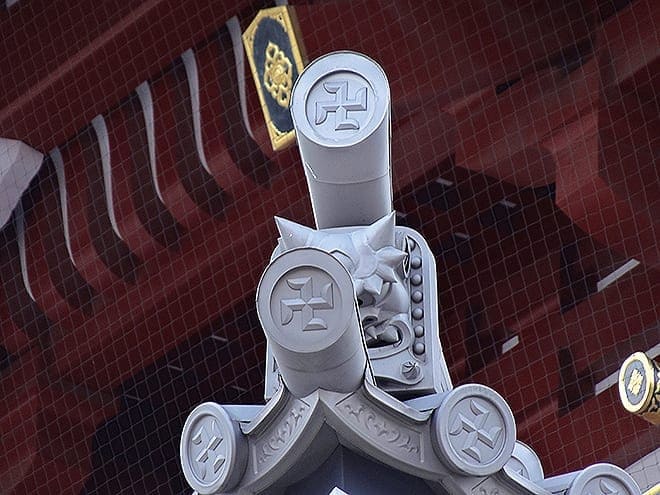The swastika symbol: let’s think about the context

 There is little room for doubt that Western history has become the dominant international history. Dominant does not mean superior, but when we think of history, as well as society and morality, the international norms favour the Western hegemony. This dominant Western point of view often leads to misconceptions and misunderstandings of other cultures, other countries, and other religions.
There is little room for doubt that Western history has become the dominant international history. Dominant does not mean superior, but when we think of history, as well as society and morality, the international norms favour the Western hegemony. This dominant Western point of view often leads to misconceptions and misunderstandings of other cultures, other countries, and other religions.
The Japanese Geospatial Information Authority (GSI) recently recommended that mapmakers in Japan change certain map symbols to make them more foreigner-friendly and more internationally recognizable. For example, the H symbol more commonly used to represent hospitals on English maps, instead represents hotels in Japan. There are a number of other symbols that also seemed difficult to grasp for those that provided GSI with feedback, some of whom were international students. Most controversial among these is the symbol for Buddhist temples, a swastika, known as manji in Japan. It is a religious symbol commonly visible on architecture at a number of temples, and used to represent thousands of temples on Japanese maps. In its place will be a simplified picture of a multi-tier pagoda, a building also commonly seen at a number of temples.
The GSI has made it clear that they are only recommending changes to symbols on foreign-language maps, and that symbols prevalent at these temples will remain in place. It is not for me to decide whether the GSI change this particular symbol or not, nor should it be; yet, the reasons they may have for changing it are where my concern lies. One opinion is that the GSI is changing these symbols to simply avoid confusion for foreigners, most notably tourists. Short term visitors to Japan (or any country for that matter) may not always have time or the desire to research cultural context, language, or be aware of the differences in map symbols before visiting. With the 2020 Olympics fast approaching, Japan is also trying to improve accessibility to a wider international audience as quickly as possible. Yet one would assume that a proper map legend would indicate which symbols mean what, eliminating confusion. Rationally, the appearance of thousands of swastika on a map should indicate these symbols have some meaning other than Nazism.
The other opinion is that the GSI wants to change the symbol because they feel that use of the swastika will offend foreigners; however, if someone sees this particular swastika or manji and becomes offended, it shows how little they understand of the character. It shows either an unwillingness to understand the cultural context of the symbol or a lack of education on the subject. Actually, all it really takes is a quick Google search to realize there are more uses of the symbol beyond a Western historical context focused on Nazism. It also becomes apparent that there is a lack of education among the general population regarding issues of cultural appropriation and cultural context. The swastika or rather, likenesses and variations of it, has been used all across the globe for thousands of years before the Nazi party even existed. The Nazi party simply used the symbol and put their own spin on it, so to speak.
Pre-WWII, for Europeans and North Americans, the symbol was auspicious, lucky even. Post-WWII, it will never have that meaning; rampant Nazism saw to that. Contemporary use of the symbol in North America and Europe will always carry with it the connotation of Nazism. There was a time in Japan when this symbol had a shared meaning with Nazism and yes, even today there are still nationalist fascist groups in Japan, much like in Europe and North America, that see fit to use Nazi imagery; however, these groups are outliers. They are not representative of Japan, and certainly not tied to Buddhism and use of the manji. Different context, different meaning. I guess the takeaway of all this is, as students, as academics, we should seek to not only learn the full context of situations like these, but take them as opportunities to educate others.









